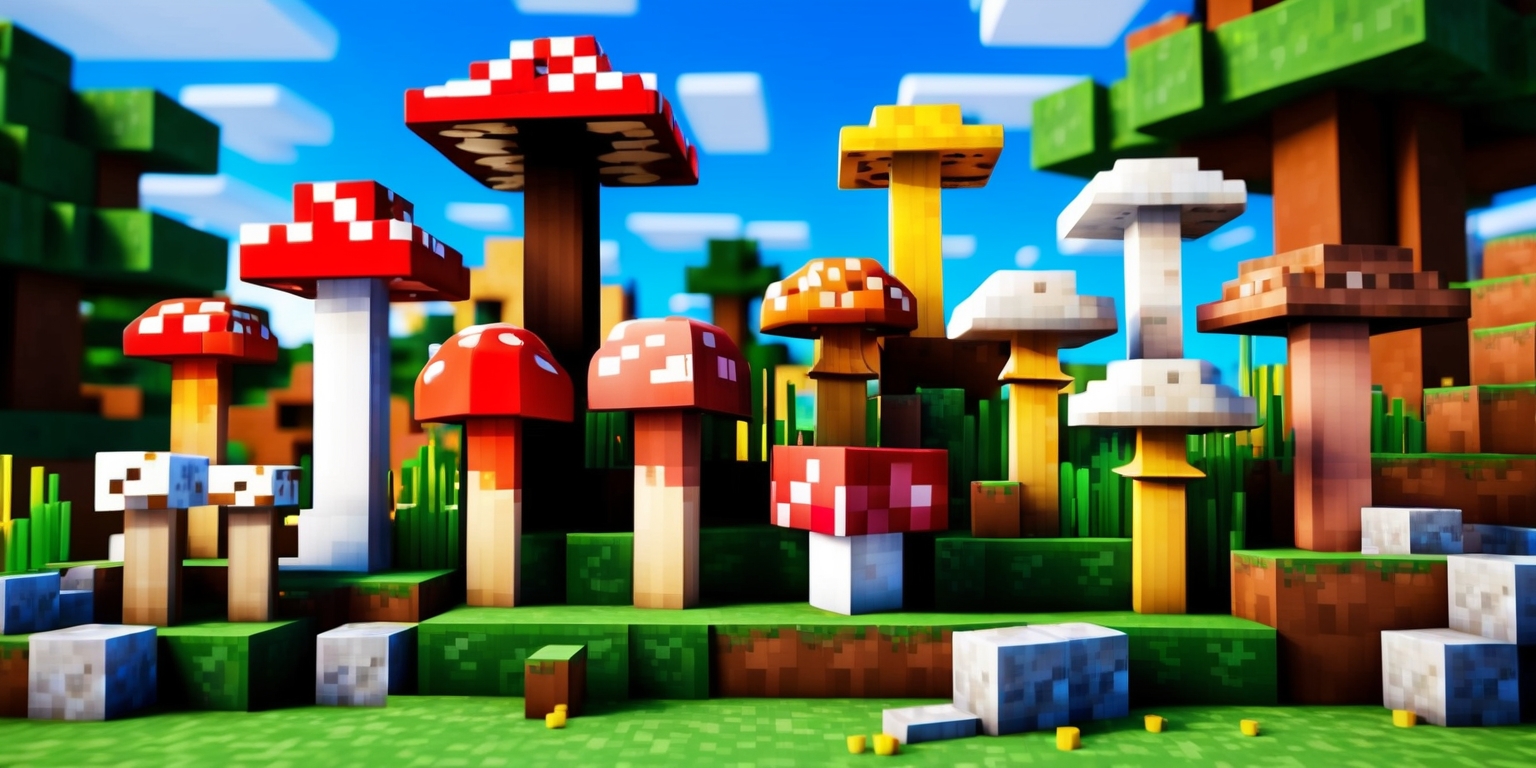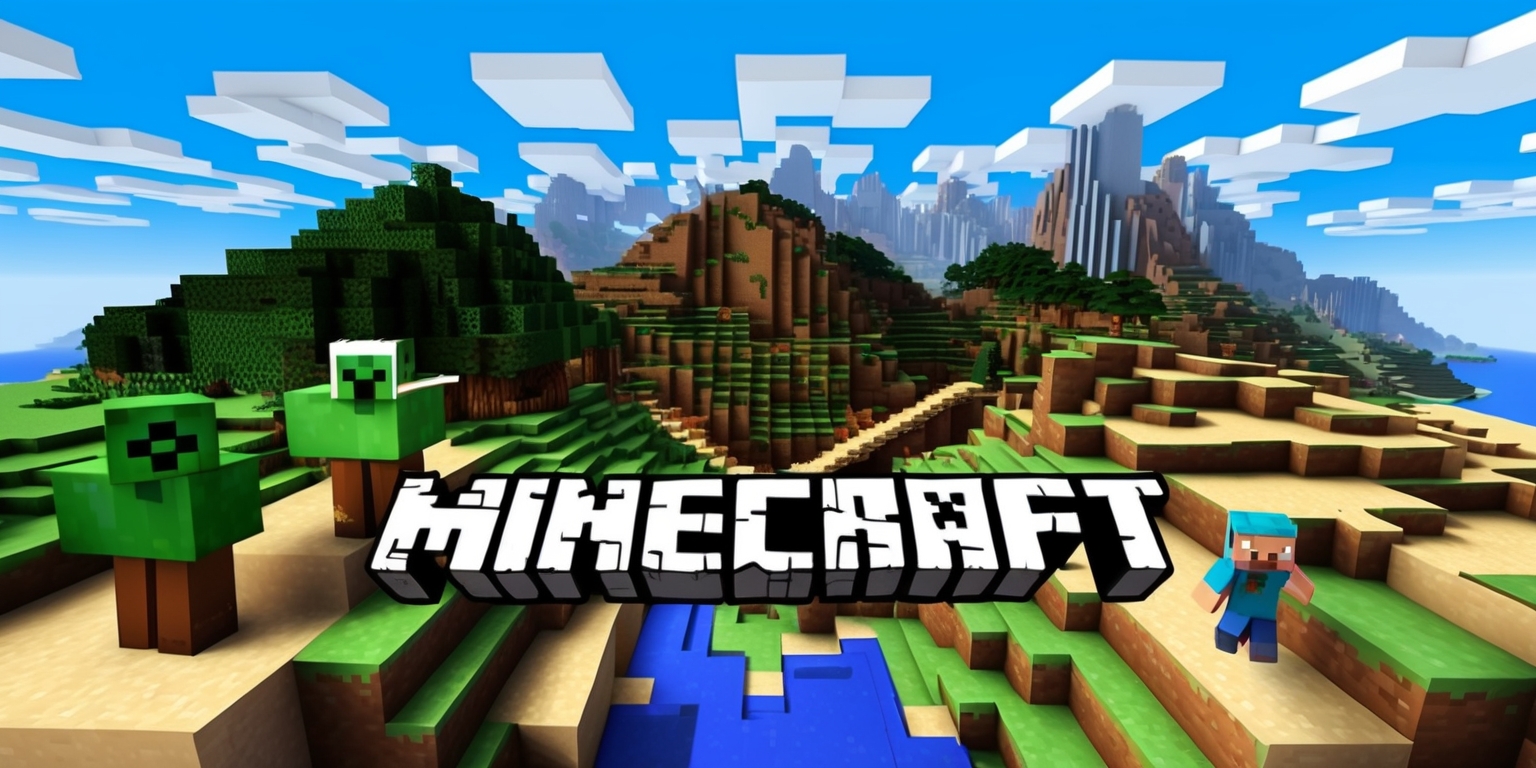Fungal Foundations: Unveiling the Multifaceted Charm of Minecraft Mushrooms
- 23 Jul 2025
- 0

In a realm where nature and creativity merge, Minecraft mushrooms present a distinctive feature that transcends ordinary flora. These fungi do more than simply add color to the landscape; they provide players with diverse interactions, clever growth mechanics, and innovative crafting opportunities. Unbounded by conventional reality, mushrooms can sprout into titanic structures with a mere application of bonemeal. As you explore realms replete with hidden surprises, these remarkable elements serve not only as a resource but also as catalysts in both gameplay strategy and aesthetic design. The intricacies of their behavior, locations, and functional uses contribute to a layered gaming experience that compels players to rethink the essence of nature in a blocky universe.
Emerging from the Shadows
Minecraft mushrooms emerge predominantly in areas with subdued lighting conditions, weaving an aura of mystery into dimly lit corners of the landscape. These fungi are not confined to a single habitat; instead, they possess a remarkable ability to generate on nearly any block. Whether nestled on the forest floor, clinging to the surfaces of expansive trees in a dense jungle, or even sprawling within the Nether’s chaotic expanses, their adaptability is truly striking. Each chunk in the world holds a defined chance for mushrooms to form naturally, adding a layer of unpredictability to each exploration. Players are thus tasked with discovering these hidden treasure troves where the interplay of light and block types determines the mushroom’s appearance, sparking intrigue and strategic opportunities in simultaneously dark and vibrant biomes.
Finding Fungal Density Across Biomes
The distribution of mushrooms across Minecraft’s varied landscapes is integral to the game’s dynamic environment. In biomes like the old growth taiga or misty swamps, players frequently witness clusters of red or brown fungi subtly integrated into the natural scenery. Particularly enchanting is the Mushroom Fields biome where the very environment is dedicated to these vibrant organisms, offering an immersive experience for those who prefer to focus on nature’s smaller wonders. Additionally, scattered hues on fallen logs or unexpected surfaces provide a delightful surprise for those meticulously exploring their surroundings. Territory-specific variations are evident as mushrooms occupy unique spaces, challenging players to diversify their search techniques while also enhancing the overall aesthetic quality of the game’s meticulously crafted terrains.
Mechanics of Harvest and Resource Management
Harvesting mushrooms in Minecraft demands a blend of patience and strategic resource management. When a player interacts with a mushroom block, the collection process is straightforward and forgiving; the block shatters quickly, releasing its fungal bounty without the need for complicated tools or techniques. Notably, even with advanced enchantments like Fortune, the yield remains consistent, highlighting a balance in gameplay mechanics where predictability mixes with exploration. Beyond harvesting, environmental changes such as the alteration or removal of adjoining blocks can lead to spontaneous dispersal of these natural resources, adding a surprising dynamic to the in-game ecosystem. Players must therefore remain vigilant, adapting to the interactive nature of the world where every alteration could inadvertently influence the availability of these cherished resources.
Bonemeal and Supernatural Growth

The use of bonemeal on planted mushrooms unlocks a fascinating growth mechanic that transcends typical plant behavior. Unlike many conventional crops, mushrooms in Minecraft have the potential to transform into monumental, towering forms when exposed to bonemeal under specific conditions. This transformation requires not only the right substrate—such as grass, dirt, or moss—but also an expanse of unobstructed space, typically a 7x7x8 area that nurtures exponential growth. The resulting giant mushroom stands as a testament to the game's playful yet intricate design philosophy. Such dynamics create opportunities for aesthetically impressive structures, making bonemeal applications an essential tool in the hands of resourceful players who are eager to experiment with scale, form, and the underlying mechanics of resource evolution within the game world.
Unique Habitat: Nature’s Playground
The natural generation of mushrooms across diverse terrains accentuates the game's emphasis on environmental storytelling. In biomes characterized by swamps, shadowed forests, and even the unpredictable Nether, mushrooms assert their presence through diverse growth patterns that challenge conventional expectations. Their ability to appear on almost any block surface—even on elements like oak, birch, spruce, or jungle wood in specific platforms—underscores a commitment to an ambient, richly detailed world. This ubiquity allows players to navigate through a tapestry of settings where mushrooms can serve as landmarks, resources, or decorative elements in player-built creations. The randomness yet consistency of their appearance weaves a subtle narrative of natural abundance and surprises, inviting players to appreciate the interconnectedness of the micro and macro elements of the Minecraft universe.
Interaction with Minecraft Entities
Mushrooms in Minecraft also engage in intriguing interactions with various entities, enhancing both gameplay variety and environmental depth. For instance, a curious occurrence involves mushrooms appearing on the backs of certain mobs, such as the remarkably altered bovine variants found in designated biomes. Such a feature creates a playful twist in the way players perceive and interact with familiar creatures, adding layers of challenge and discovery. Additionally, players in rare biomes encounter specialized animals that contribute directly to mushroom propagation, transforming the dynamics of resource acquisition. Trade interactions further emphasize the mushroom’s integral role; wandering traders offer mushrooms for emeralds, reinforcing a barter-based economy. These multifaceted interactions ensure that mushrooms remain a pivotal element of the game, bridging the gap between passive growth and active gameplay involvement.
Gastronomic Wonders in the Pixel World
The culinary applications of Minecraft mushrooms extend far beyond mere decoration, offering a host of food items that cater to a variety of gameplay needs. Through the careful assembly of mushrooms and other ingredients, crafting recipes produce dishes such as Mushroom Stew, renowned for its well-rounded nourishment in the game’s survival mode. The recipe typically merges different colored mushrooms with a bowl to create a hearty meal that replenishes health and stamina. Creative recipes do not end there; the integration of additional components, such as rabbit and vegetables, leads to innovative stews that offer variant effects. Furthermore, the inclusion of rare elements like flowers with mushrooms yields unique concoctions that bestow temporary status effects, underscoring the game’s intricate crafting and food engineering mechanics designed to enrich survival strategies.
Interplay of Environment and Fungal Life
The growth and persistence of mushrooms in Minecraft are tightly linked to environmental conditions, creating an evolving canvas where flora and terrain interplay harmoniously. Mushrooms thrive in poorly lit regions, where low brightness not only encourages their proliferation but also prevents them from being overshadowed by other plant life. As players manipulate the environment, whether through mining or the application of bonemeal, they inadvertently alter these niche ecosystems, resulting in a dynamic balance between resource abundance and scarcity. This interaction is further complicated when the immediate surroundings change state—such as moving supporting blocks or experiencing fluid flows—which can trigger the spontaneous decay or relocation of mushrooms. Such environmental responsiveness makes the game world feel vibrant and alive, where even the smallest change can rewrite the rules of natural development.
Subtle Luminescence and Artistic Design
Mushrooms are not solely functional; they also contribute to the artistry of Minecraft. Specifically, brown mushrooms, despite their subdued appearance, emit a delicate glow that enhances the ambient lighting in darkened spaces. This subtle luminescence becomes particularly noticeable when these fungi are left to grow organically in shadowed areas or incorporated within carefully designed in-game architecture. Their gentle light source not only adds a layer of aesthetic refinement but also plays a functional role by offering minimal illumination without overwhelming the natural contrast of the environment. This duality allows players to create mood-enhancing environments where gameplay, beauty, and resource management converge. By integrating such natural lighting solutions, the game rewards both the creative impulses and strategic planning of its community, elevating the overall immersive experience.
Resourceful Applications and Crafting Innovations
The versatile nature of Minecraft mushrooms extends into a myriad of crafting endeavors, where their inherent properties stimulate creative and practical applications. Beyond culinary uses, mushrooms serve as essential components in potion brewing, facilitating the creation of powerful enhancements. When combined with other ingredients like sugar or specific animal-derived items, they contribute to the formation of unique compounds that modify gameplay mechanics in subtle yet meaningful ways. These compounds, once integrated into the crafting system, allow players to modify various traits, paving the way for innovative strategies during intense in-game scenarios. The spectrum of possibilities derived from these seemingly mundane blocks elevates gameplay, as players are encouraged to experiment with new combinations, harnessing the full potential of mushrooms to unlock unconventional pathways within an ever-evolving digital world.